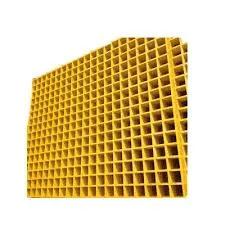
-
 Afrikaans
Afrikaans -
 Albanian
Albanian -
 Amharic
Amharic -
 Arabic
Arabic -
 Armenian
Armenian -
 Azerbaijani
Azerbaijani -
 Basque
Basque -
 Belarusian
Belarusian -
 Bengali
Bengali -
 Bosnian
Bosnian -
 Bulgarian
Bulgarian -
 Catalan
Catalan -
 Cebuano
Cebuano -
 China
China -
 China (Taiwan)
China (Taiwan) -
 Corsican
Corsican -
 Croatian
Croatian -
 Czech
Czech -
 Danish
Danish -
 Dutch
Dutch -
 English
English -
 Esperanto
Esperanto -
 Estonian
Estonian -
 Finnish
Finnish -
 French
French -
 Frisian
Frisian -
 Galician
Galician -
 Georgian
Georgian -
 German
German -
 Greek
Greek -
 Gujarati
Gujarati -
 Haitian Creole
Haitian Creole -
 hausa
hausa -
 hawaiian
hawaiian -
 Hebrew
Hebrew -
 Hindi
Hindi -
 Miao
Miao -
 Hungarian
Hungarian -
 Icelandic
Icelandic -
 igbo
igbo -
 Indonesian
Indonesian -
 irish
irish -
 Italian
Italian -
 Japanese
Japanese -
 Javanese
Javanese -
 Kannada
Kannada -
 kazakh
kazakh -
 Khmer
Khmer -
 Rwandese
Rwandese -
 Korean
Korean -
 Kurdish
Kurdish -
 Kyrgyz
Kyrgyz -
 Lao
Lao -
 Latin
Latin -
 Latvian
Latvian -
 Lithuanian
Lithuanian -
 Luxembourgish
Luxembourgish -
 Macedonian
Macedonian -
 Malgashi
Malgashi -
 Malay
Malay -
 Malayalam
Malayalam -
 Maltese
Maltese -
 Maori
Maori -
 Marathi
Marathi -
 Mongolian
Mongolian -
 Myanmar
Myanmar -
 Nepali
Nepali -
 Norwegian
Norwegian -
 Norwegian
Norwegian -
 Occitan
Occitan -
 Pashto
Pashto -
 Persian
Persian -
 Polish
Polish -
 Portuguese
Portuguese -
 Punjabi
Punjabi -
 Romanian
Romanian -
 Russian
Russian -
 Samoan
Samoan -
 Scottish Gaelic
Scottish Gaelic -
 Serbian
Serbian -
 Sesotho
Sesotho -
 Shona
Shona -
 Sindhi
Sindhi -
 Sinhala
Sinhala -
 Slovak
Slovak -
 Slovenian
Slovenian -
 Somali
Somali -
 Spanish
Spanish -
 Sundanese
Sundanese -
 Swahili
Swahili -
 Swedish
Swedish -
 Tagalog
Tagalog -
 Tajik
Tajik -
 Tamil
Tamil -
 Tatar
Tatar -
 Telugu
Telugu -
 Thai
Thai -
 Turkish
Turkish -
 Turkmen
Turkmen -
 Ukrainian
Ukrainian -
 Urdu
Urdu -
 Uighur
Uighur -
 Uzbek
Uzbek -
 Vietnamese
Vietnamese -
 Welsh
Welsh -
 Bantu
Bantu -
 Yiddish
Yiddish -
 Yoruba
Yoruba -
 Zulu
Zulu
Creating Innovative Designs Using a Mandrel Tool for Precision Crafting
The Versatility of Mandrels in Manufacturing and Crafts
The mandrel, a simple yet crucial tool, plays an integral role in various manufacturing and crafting processes. This cylindrical tool is typically used to support and shape materials, allowing for precise work that enhances the quality and durability of the final product. Its applications span across numerous industries, from automotive to aerospace, jewelry making, and woodworking, thus highlighting its versatility and importance.
In the realm of manufacturing, mandrels are commonly utilized in processes such as tube bending and drilling. When bending metal tubes, for instance, a mandrel is inserted into the tube to prevent it from collapsing under pressure. This not only ensures that the bend is smooth and uniform but also maintains the integrity of the material. Similarly, in drilling applications, a mandrel acts as a sturdy support that guides the drill bit, ensuring accuracy and minimizing deviations. This is particularly significant in high-precision industries, where even the slightest error can lead to significant financial losses or safety hazards.
The use of mandrels extends into the field of woodworking as well. Woodworkers often employ mandrels to shape wooden pieces into desired forms, especially in the crafting of bowls or other round objects. By mounting the wood onto a mandrel, artisans can achieve a balanced rotation as they carve, sand, or finish the piece. This not only enhances the aesthetic appeal of the final product but also ensures that the shapes are symmetrical and well-proportioned.
mandrel

In the world of jewelry making, mandrels are indispensable tools for creating rings, bracelets, and other intricate designs. Jewelers use various types of mandrels to shape metal and set stones, enabling them to create pieces that are not only beautiful but also structurally sound. For example, a ring mandrel allows jewelers to form rings of specific sizes and ensures that the bands have a consistent shape. This level of precision is vital, as it contributes to both the visual allure and wearability of the jewelry.
Furthermore, the importance of mandrels is not limited to their physical applications. They also play a significant role in the arts, serving as support structures for sculptors and ceramicists. By using a mandrel, artists can achieve shapes that would be difficult to create otherwise, allowing for greater creativity and expression in their work. The stability and reliability that mandrels provide enable craftsmen to explore new techniques and materials, pushing the boundaries of traditional practices.
As technology continues to advance, the design and fabrication of mandrels are also evolving. Modern materials such as composites and advanced metals enhance their durability and performance. Additionally, innovative manufacturing processes, including 3D printing, allow for customized mandrels tailored to specific projects, further broadening their application across different industries.
In conclusion, the mandrel is a vital tool that significantly contributes to the efficiency and accuracy of various manufacturing and crafting processes. Its applications are extensive, spanning several industries and allowing artisans and manufacturers to produce high-quality, intricate designs. As technology progresses, the evolution of mandrels promises to further enhance their capabilities, solidifying their status as indispensable tools in the hands of creators and engineers alike. Whether in a workshop, factory, or studio, the humble mandrel remains a cornerstone of precision and craftsmanship.
Latest news
-
High-Quality Fiberglass Car Bodies Durable GRP Car & Boat Body SolutionsNewsJul.08,2025
-
High-Quality Fiberglass Dual Lamination Product Manufacturer Durable FRP & GRP Dual Lamination SolutionsNewsJul.08,2025
-
Rectangular Tank with Dimensions for GRP Calculation Custom Fiberglass GRP Rectangular TanksNewsJul.07,2025
-
High-Quality Fiberglass Weir Custom FRP Weir & Fiberglass Tanks ManufacturerNewsJul.07,2025
-
CPVC FRP Pipe A Reliable Choice for Industrial Applications High Strength & Corrosion ResistanceNewsJul.07,2025
-
Fiberglass Scrubber for Effective Cleaning and Stain Removal – Superior Performance in Various ApplicationsNewsJul.06,2025









